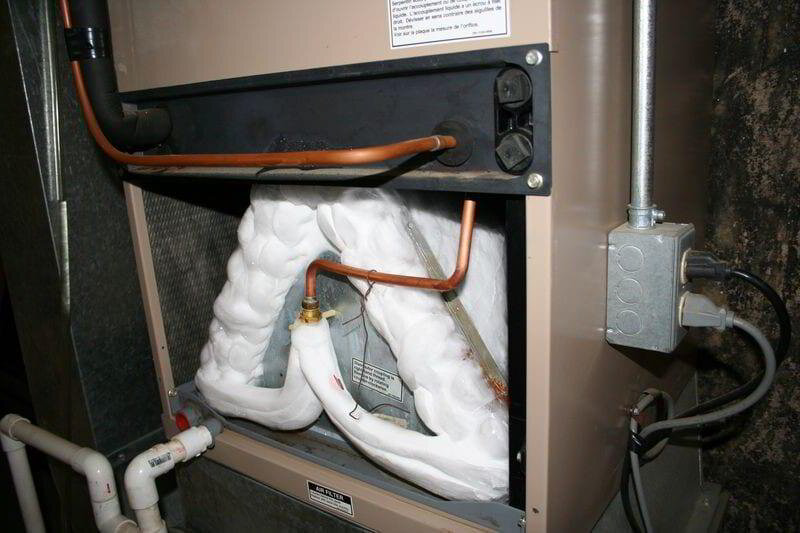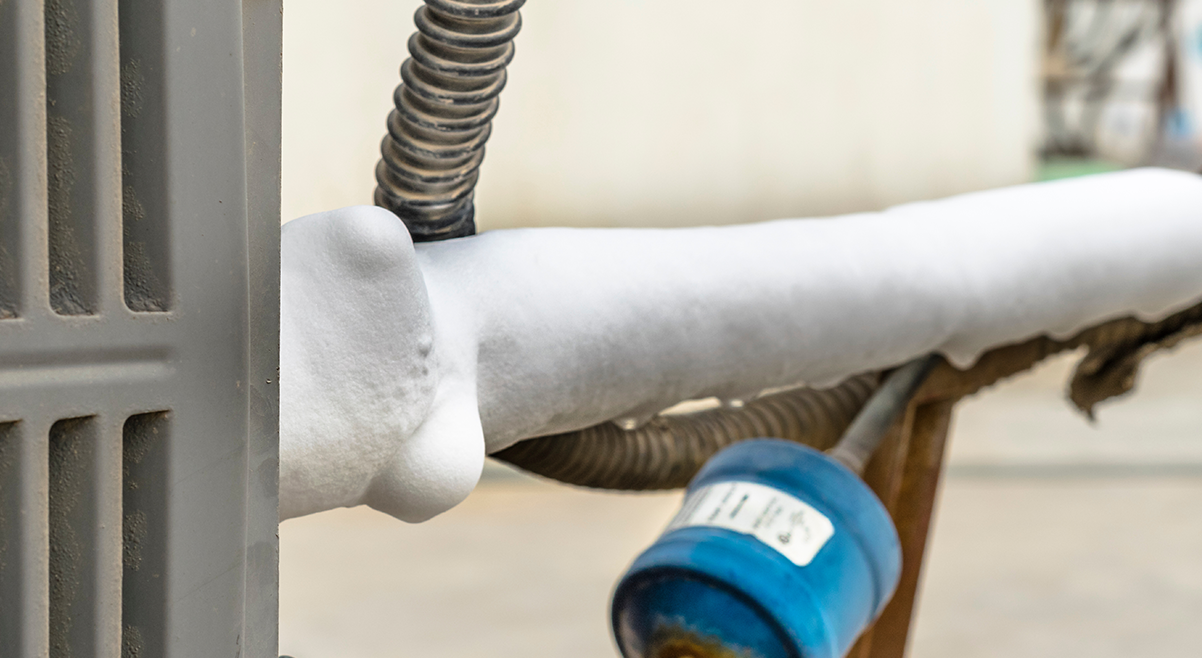Steps to Take When Your AC Pipe Freezes: Comprehensive Handbook
Steps to Take When Your AC Pipe Freezes: Comprehensive Handbook
Blog Article
They are making a few good annotation regarding Why Is Ice On My Outside Air Conditione in general in this content further down.

Intro
Finding that your air conditioner pipeline is iced up can be worrying, specifically throughout hot summer season when you depend on your air conditioner one of the most. Recognizing what to do in such a scenario is critical to stop additional damage to your air conditioning system and ensure your comfort inside.
Comprehending the Causes
A number of factors can add to the cold of an air conditioning pipe. Recognizing these reasons can assist you resolve the problem efficiently.
Absence of Airflow
One typical cause of an icy air conditioning pipeline is inadequate airflow. When the airflow over the evaporator coil is limited, it can create the coil to drop below freezing temperature level, resulting in ice development on the pipe.
Low Refrigerant Levels
Not enough refrigerant degrees in your air conditioning system can also lead to an icy pipe. Low cooling agent levels can cause the pressure in the system to drop, leading to the cold of dampness on the evaporator coil.
Cold Weather Conditions
In cooler climates, freezing temperature levels outside can add to the cold of air conditioner pipelines. If your air conditioning system is not effectively insulated or if there are leakages in the ductwork, chilly air can penetrate the system, creating the pipeline to ice up.
Dirty Air Filters
Unclean or stopped up air filters can limit air movement in your a/c system, resulting in various issues, including a frozen pipe. It's essential to change or cleanse your air filterings system regularly to make certain appropriate airflow and prevent ice accumulation.
Signs of a Frozen Air Conditioner Pipe
Acknowledging the signs of an icy air conditioning pipeline is important for prompt activity.
Decreased Airflow
If you see a considerable reduction in air movement from your vents, it might show a frozen pipeline.
Ice Buildup on the Pipe
Noticeable ice accumulation on the cooling agent line or the evaporator coil is a clear indication of a frozen air conditioner pipeline.
Strange Sounds from the Unit
Unusual noises, such as hissing or gurgling, coming from your air conditioning device can signify that there's ice present on the pipe.
Immediate Actions to Take
When confronted with an icy air conditioner pipe, it's important to act promptly to prevent further damage to your cooling system.
Shutting off the a/c
The very first step is to switch off your ac system to avoid the system from running and worsening the problem.
Checking for Blockages
Inspect the location around the interior unit for any blockages that might be obstructing air flow, such as furniture or drapes.
Thawing the Pipe
You can utilize mild techniques like putting towels soaked in cozy water around the icy pipe to assist thaw it slowly.
Preventive Measures
Taking safety nets can assist avoid future events of a frozen air conditioner pipe.
When DIY Methods Fail
If your efforts to thaw the pipe or address various other problems are unsuccessful, it's time to call in a specialist.
Significance of Hiring a Professional HVAC Technician
A qualified HVAC specialist has the expertise and tools essential to diagnose and repair concerns with your air conditioning system securely and effectively.
Regular Maintenance Checks
Arrange regular upkeep consult an expert HVAC professional to ensure that your AC system is running efficiently.
Altering Air Filters
Consistently change or cleanse your air filters to stop air flow limitations and preserve ideal performance.
Insulating Exposed Pipes
If your air conditioning pipes are exposed to cold temperatures, consider shielding them to stop cold throughout winter season.
Seeking Professional Help
If DIY methods fail to resolve the problem or if you're unsure concerning exactly how to proceed, it's ideal to look for help from a qualified HVAC technician.
Verdict
Handling an icy a/c pipeline can be a frustrating experience, however understanding how to react can help decrease damage and restore comfort to your home. By understanding the causes, identifying the indicators, and taking prompt activity, you can effectively deal with the concern and prevent future incidents.
What to Do If Your AC Line Is Frozen
Make Sure All Supply and Return Air Vents Are Open
If you notice problems with airflow, the first thing you should do is check your supply and return vents. Supply vents distribute clean, conditioned air throughout your home. As this air becomes stale, it’s pulled into the return vent, where it’s reconditioned before being sent back out through the supply vent.
When these vents are closed, air won’t flow in the home. Before examining your AC, check the vents in every room and ensure they’re all open.
Check for a Dirty Air Filter
Another possible cause of limited airflow is a dirty air filter. Your air conditioner’s filters catch elements you don’t want to breathe in, such as dirt and dust. Over time, filters can become clogged, ultimately blocking air from flowing in and out. The lack of airflow can then cause the entire coil to freeze and will completely restrict any air from moving through it. The AC may need to be powered off for one to two days to allow the coil to thaw after replacing the filter to allow proper functioning of the unit. This debris can also accumulate on your AC’s evaporator coil, requiring a more serious repair. In general, air filters should be cleaned regularly (about every two weeks).
Assess Your Outdoor Unit
In addition to checking your AC, assessing the outdoor unit is a good idea. Also known as the condensing unit, it works with your interior unit to release heat outside. An issue with the outdoor unit can result in rising internal temperatures.
Overgrown Shrubs or Clogged Leaves
From leaves and twigs to shrubs and debris, there’s no shortage of outdoor elements that can accumulate around your condensing unit. When these elements get lodged inside the unit, they can block airflow. Fortunately, removing the blockage can solve the problem.
Sounds of a Broken Fan
Shrubs and leaves aren’t the only things that can impede your outdoor unit’s airflow. If the fan is broken, the unit won’t be able to properly get rid of heat — which means the internal temperature won’t go down. First, make sure the fan is spinning. If it is, check for the following sounds of a broken fan:
Buzzing Rattling Screeching Hissing Clicking Preventative Measures
Nobody wants to deal with a frozen AC line. In addition to causing problems with your air conditioner, they require professional repairs. On the bright side, there are preventative measures you can take to help ensure this issue doesn’t arise in the first place.
https://www.coopergreenteam.com/blog/what-to-do-if-ac-line-frozen

Hopefully you enjoyed our piece on Have a Frozen AC Line? Here’s How to Fix It. Thanks a lot for taking time to browse our blog post. Are you aware of somebody else who is intrigued by the niche? Take a moment to promote it. Thanks for your time spent reading it.
Browse Our Site Report this page